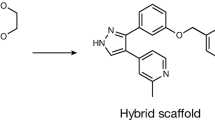Abstract
A 54-YEAR-OLD male patient was admitted to hospital with signs of septicæmia and obstructive jaundice after having suffered from gall-bladder troubles for the past five years. By blood culture in brain-heart infusion broth a rich growth of a highly polymorphous Gram-negative organism was obtained (Fig. 1, top) which gave the typical biochemical reactions of an Escherichia coli and a positive hæmagglutination test. The macroscopic appearance of the colonies also did not differ from a slightly mucoid E. coli culture. No dwarf colonies were found. The polymorphism (filaments with broad swellings, globular and club-shaped forms) was most marked on a culture 24–48 hr. old on 5 per cent rabbit blood agar. After three days the majority of the filaments had broken up into chains of rods and the bizarre forms had disappeared. This aberrant morphology persisted for ten months if the strain was subcultured only on blood agar. After this time it grew in more or less uniform short filaments. If subcultured exclusively on plain agar, it reverted after five months to the typical size and shape of E. coli. No morphological change could now be brought about by transferring it from plain to blood agar.
This is a preview of subscription content, access via your institution
Access options
Subscribe to this journal
Receive 51 print issues and online access
$199.00 per year
only $3.90 per issue
Buy this article
- Purchase on Springer Link
- Instant access to full article PDF
Prices may be subject to local taxes which are calculated during checkout
Similar content being viewed by others
References
Edwards, P. R., and Ewing, W. H., “Identification of Enterobacteriaceae” (Minneapolis, 1955).
Fredericq, P., “Actions antibiotiques réciproques chez les Enterobacteriaceae” (Gemblou, Belgique, 1948).
Fredericq, P., “Ann. Rev. Microbiology”, 11, 7 (1957).
Hinshelwood, Sir Cyril, “The Chemical Kinetics of the Bacteria Cell”, 232 (Oxford, 1946).
Sinkovics, J., Act. Microbiol. Acad. Sci. Hung., 4/1, 59 (1957).
Author information
Authors and Affiliations
Rights and permissions
About this article
Cite this article
REITLER, R., TEICHER, M. & VALERO, A. An Unusual Strain of Escherichia coli in Septicæmia as an example of the Transformative Effect of Symbiosis. Nature 183, 339–341 (1959). https://doi.org/10.1038/183339b0
Issue Date:
DOI: https://doi.org/10.1038/183339b0
Comments
By submitting a comment you agree to abide by our Terms and Community Guidelines. If you find something abusive or that does not comply with our terms or guidelines please flag it as inappropriate.



